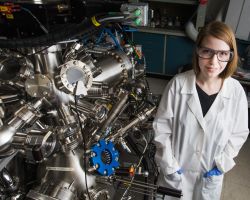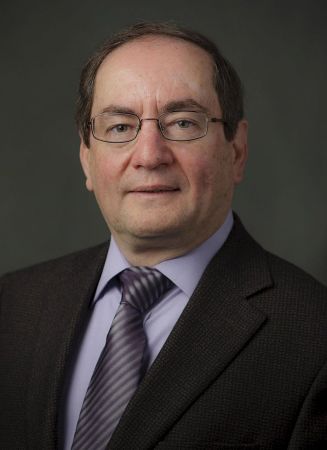The 28th North American Catalysis Society (NACS) meeting will be held in Providence, RI on June 18 - 23, 2023 where two PhD students, Adhika Setiawan and Erin Sobchinsky, both from the Chemical and Biomolecular Engineering Department at Lehigh University, have been selected to participate as recipients of the 2023 Richard J. Kokes Travel Award.
The Kokes Awards are sponsored by the North American Catalysis Society and administered by the North American Meetings (NAM) organization. The objective of the Richard J. Kokes Travel Award program is to encourage the participation of students in the biennial North American Meetings. The Kokes Award covers a portion of the lodging and conference registration costs. In addition, significant support will be provided by government agencies such as NSF and US-DOE. This is a competitive award with over 200 excellent applications submitted for ~146 awards granted.
Eligible students need to be enrolled at a North American university and need to present a paper at the meeting. The Kokes awardees will be required to contribute some service time to the running of the conference (e.g., speaker support) and to be present at the meeting during the entire time. Traditionally, these awards have been presented only to graduate students, but at the 22nd NAM, for the first time, undergraduate students who met eligibility requirements were also considered.

Adhika Setiawan is a fourth year Ph.D. student in the Chemical and Biomolecular Engineering Department at Lehigh University. Throughout his primary and secondary education in Indonesia and Singapore, Setiawan gained an interest in renewable alternatives for commodity chemicals and fuel sources, which he carried through his tertiary education as well, studying catalytic depolymerization of lignocellulosic biomass during his B.S. degree, and catalytic light olefin upgrade during his M.S. degree. Currently, Setiawan is working under the supervision of ChBE Prof. Srinivas Rangarajan, where he uses first principles-based simulation techniques like Density Functional Theory (DFT) and molecular dynamics (MD), as well as microkinetic modeling, to better understand reaction mechanisms of heterogeneous catalytic reactions; The elucidation of which allows for carefully tuned catalyst design and synthesis procedures. Setiawan’s anticipated graduation is 2024, following which, he is also aiming towards a career in academia.
Title: An Expanded Reaction Network of Ethylene Oxidation on Partially Oxidized Silver (Ag) Surface
Abstract: Overcoming the selectivity challenge in the selective oxidation of ethylene has been an ongoing decades-long journey which has been partially addressed through the utilization of a slew of Silver (Ag) catalyst promoters from across the periodic table. Despite their proven efficacy, there is a lack of systematic understanding in the promotion of the catalyst, and detailed effects of combinations of promoters are not well understood. Additionally, there has been a reinvigorated push towards a more careful study of the oxidic reconstruction of the Ag surface during the reaction. These concerns guide the three focal points of the current study: 1) Extension of the ethylene oxidation (EO) reaction mechanism to account for partially oxidized surfaces, 2) Analysis of promoter effects on specific elementary steps in the extended mechanism, and 3) ab-initio simulations supplement for atomic-level details in both unpromoted and promoted cases.

Title: Ethylene Dimerization to n-butene with Nickel Sulfate on Zirconia: Investigation of the Molecular Structure and Activity of Surface Nickel and Sulfate Species
Abstract: Ethylene dimerization involves the exothermic dimerization of two ethylene molecules to 1-butene which is then isomerized to form 2-butene. Ethylene dimerization can be carried out heterogeneously on several metal oxide promoted solid acid catalysts. Nickel-based catalysts are typically reported to have the highest activity and selectivity to n-butene due to nickel’s ability to prevent further oligomerization of butene to higher chain hydrocarbons [1]. Nickel oxide promoted sulfated zirconia is a promising heterogeneous ethylene dimerization catalyst owing to its high activity and selectivity for 2-butene under mild reaction conditions (20 ⁰C) as well as its high surface acidity and well dispersed nickel phase [2]. However, little is known about the nature of the sulfate and nickel sites as well as the structure-activity relationships that are responsible for enhanced ethylene dimerization activity. To address these gaps in the literature, this work focuses on determining the nature of the interactions between the nickel and sulfate species as well as the structures and oxidation states of the surface sites that contribute to enhanced ethylene dimerization activity. To do this, several characterization techniques were applied (in situ infrared (IR), Raman, and ultraviolet-visible (UV-vis) spectroscopy, ethylene temperature programmed surface reaction (TPSR), in-situ x-ray adsorption spectroscopy (XAS) and low-energy ion scattering (LEIS)) to determine the catalyst structure and oxidation states under different environments.


